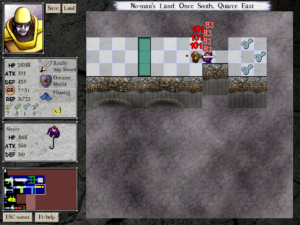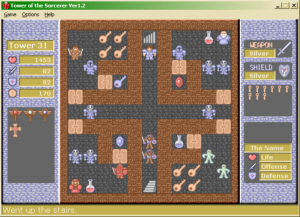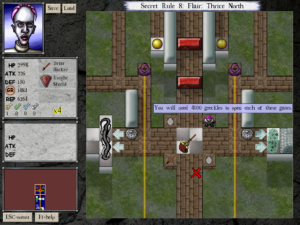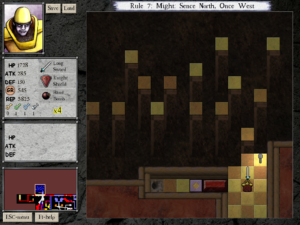Chrono Trigger
OK, I realize I’m already in the middle of a JRPG. But The Brainy Gamer’s Vintage Game Club has just chosen Chrono Trigger as their latest game to collectively play though and discuss, and since it’s on the Stack, I may as well play along. And anyway, it looks like I’ll have plenty of time to play FF6 between Chrono Trigger sessions. The Club has a week-by-week schedule for synchronizing play, and I’ve just completed the first week’s allotment in a single session.
Apparently Chrono Trigger is considered by many to be the best JRPG ever. Having grown up as a PC gamer rather than a console gamer, I had no idea. The only reason I own a copy already is that it came with the anthologized Final Fantasy for Playstation, taking the place of FF3 (which still has only been released for Nintendo consoles). It was a collaboration between the creators of the Final Fantasy, Dragon Quest, and Dragon Ball franchises. Of these, Final Fantasy is the only one I’m greatly familiar with, so that’s the main thing I’m comparing it to in my mind as I play.
The mechanics are basically Final Fantasy-like, with the ATB combat system and all, but the presentation is greatly different. Combat mode isn’t cleanly separated from exploration mode, but happens on the same screen. To support this, your entire party is always visible as distinct sprites, rather than lumped into a single unit like in most Final Fantasy games. (In these respects, we see Square catching up to what Ultima 6 did a few years earlier.) Random encounters don’t just happen to you suddenly, like pits you fall into, but instead, monsters are seen going about their monster business before you fight them — even when you walk into an ambush, there’s animation of the ambush being sprung, like a mini-cartoon, usually with some slapstick in it.
The characters themselves get to be more detailed than in a Final Fantasy, because they’re not squashed to the size of a map tile. For that matter, map tiles are a less noticable feature all round. Presumably the maps are still tile-based, but the tiles are never a constraint to movement, and the overland map looks extremely freeform.
Speaking of freedom on the overland map, I was surprised at just how much the game lets you wander around before getting down to the plot. You basically get the run of the continent, and probably another continent besides (there seems to be a ferry, although I didn’t take it). The game guides you pretty clearly, though. Wherever you go, everyone is talking about the Millennial Fair. The Fair is one of the closest things to your starting location, and it’s chock-a-block with interactive doodads to keep your attention focused there. At the fair, an accident with an experimental teleporter (invented by the protagonist’s meganekko friend) causes someone to disappear, leaving only a pendant behind. I went to pick up the pendant, figuring that it would be important in the investigation of what happened, only do discover that the game interpreted my action as a signal that I wanted the teleporter turned back on immediately so I could follow the missing person wherever she went. (A singularly irresponsible moment — who’s to say she wasn’t simply vaporized? We know from the title that it’s a time-travel game, but have the characters read the box?)
I was tempted at this point to go back to my last save, as I wasn’t finished exploring yet. But I kept on playing anyway, knowing that I’d be back: they wouldn’t have made all that world if they weren’t going to use it. And indeed, by now I’ve been back and again away. I’ll say this for the game: it moves at a pretty good clip. The story’s been pretty simple, and (perhaps a little ironic for a game about time travel) entirely focused on the present moment. That is, it hasn’t been going in for lingering mysteries or obvious set-ups for later events. It’s just a series of misadventures that your gang of anime stereotypes tumble into one after the other.
 Comments(2)
Comments(2)



